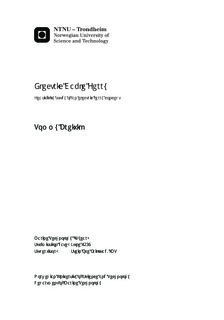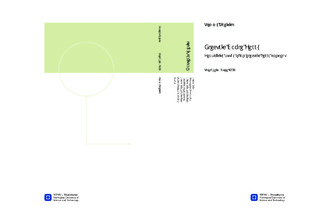| dc.description.abstract | AbstractThe thesis in hand has investigated the feasibility of a cable electric ferry concept. The concept investigated is based on that a short route ferry receives its propulsive power through a cable connected to the land power grid. Four cable transfer configurations and associated equipment have been looked upon. The cable can either be stretched in the air over the route, it can float after the ferry, it can be towed submerged after the ferry, or it can follow the bottom contours after the ferry. The three latter configurations required storage and cable handling equipment, which can either be located onboard the ferry or on shore. The cable is reeled out under transit and spooled in on the way back. The air stretched configuration requires an arm type connection between the ferry and the cable in order to receive power. Current available technology has been assessed for concept realization in terms of cable and handling equipment. In addition, regulations for power onboard and emergency power systems are viewed upon, as well as regulations on emissions to air. Competing and alternative power systems to the concept have also been assessed. Lastly, a case study for concept implementation has been conducted.Findings made in the thesis include that current cable material composition and layer configurations will need engineering in terms of increasing strength, and reducing weight and dimension without influencing conductivity. Current cable handling equipment used in offshore cable laying vessels have good tension specifications for the concept, but compared to alternative power sources such as diesel- and LNG-gensets they have large weights and dimensions, and their operational handling speed is low for high tension levels. This gives that current technology would need development for concept realization. Weights and dimensions must be reduced, and handling speed must be increased such that the ferry is able to operate in normal transit with speed and payload. Further, the concept has also been economically compared with alternative power sources. With current technology the concept costs exceed the cost of competing alternatives, where the most expensive concept component is the cable. The cable cost exceeds the cost of a new LNG-genset. Cable handling equipment costs are relatively low compared to the cable. As for operational costs, electricity is found comparable with current LNG prices. But for maintenance costs, the concept is far more expensive than for instance a LNG-genset, because the cable will have relatively low operational lifecycle due to wear and fatigue, and will have to be replaced a lot sooner than gensets. And a genset can increase operational lifecycle by being overhauled, where pistons, bearings and seals are replaced.The concept is found physically feasible, but to meet the specification requirements equipment and components will need engineering and analyses. Economically, the concept is rather insufficient, but future local emission regulations and fuel costs may make the concept achievable. | nb_NO |

